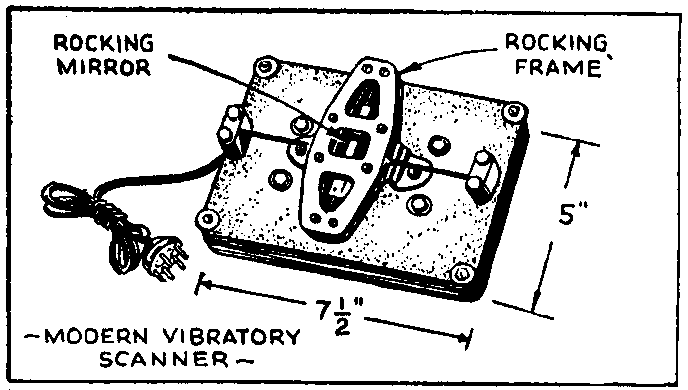One of the early attempts at developing a small mechanical scanner was the Vibratory scanner. In this device, a small
mirror, "rocked" in the "horizontal" direction and simultaneously, in a "vertical" direction, perpendicular to the
first. The mirror, usually about 1/4" square, was controlled by a pair of electromagnets driven by appropriate
sweep signal frequencies. Because of the added weight of the rocking frame, it was always driven by the framing sweep signal because it was the lower frequency of the two. Therefore, the rocking mirror was always driven by the line sweep signal. |

|
To improve the efficiency of the scanner, the mirror mounting and the rocking frame were made resonant to the two sweep frequencies. A light source, modulated by the picture signal was reflected by the vibrating mirror onto a screen.
Pictures as large as 3 feet square and with up to 240 lines were claimed with this system. The main failing of the Vibratory scanner was that it produced a sine wave scanning action, not compatible with signals from cameras equipped with the usual Nipkow disk or electronic pickup tubes such as the Image Dissector or Iconoscope. In addition, sine wave scanning produces undesirable shading of the image. Similar scanners were attempted using Piezo-Electric crystals or Electrostatic drivers instead of electromagnets. They suffered from the same problems. |